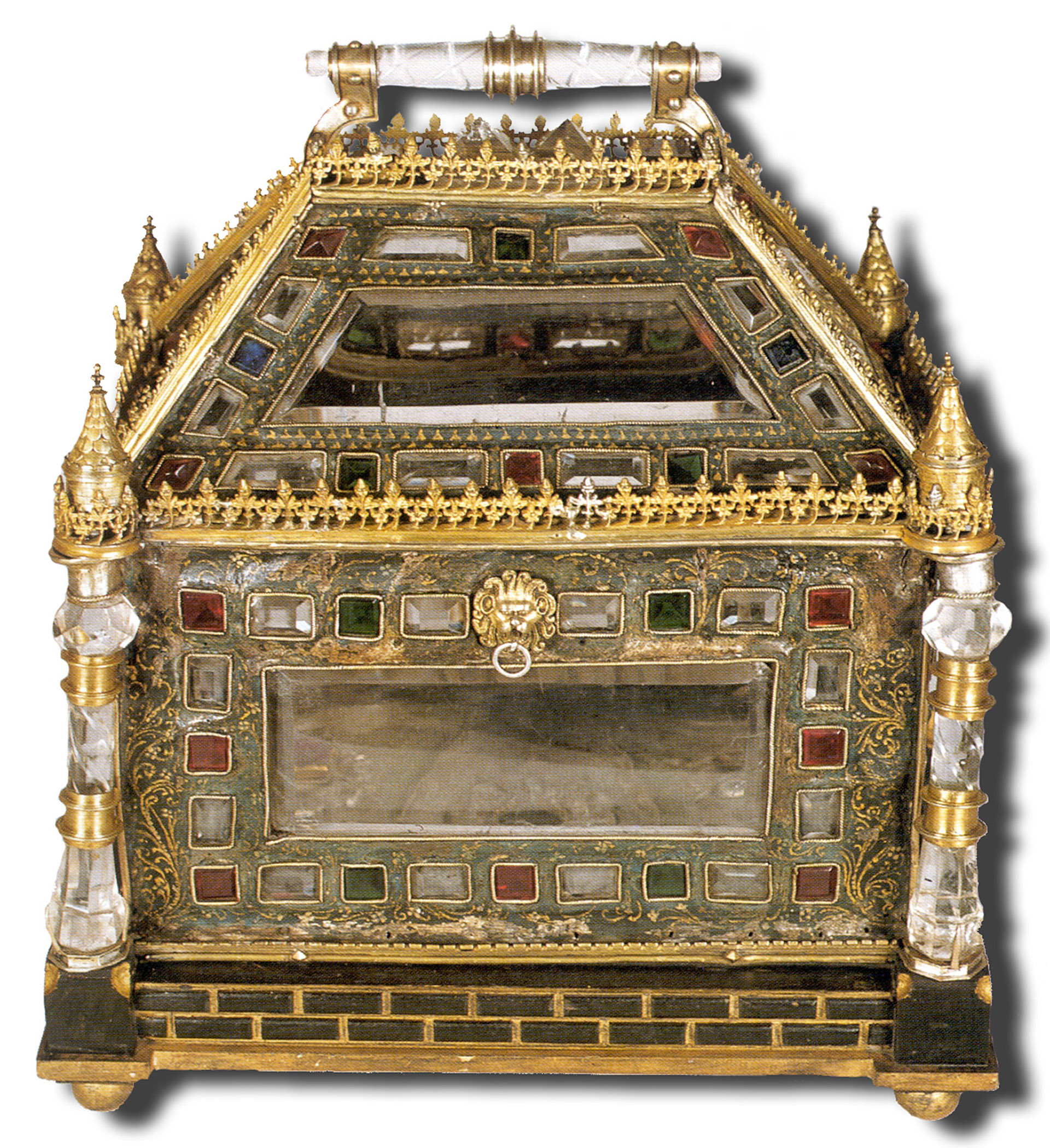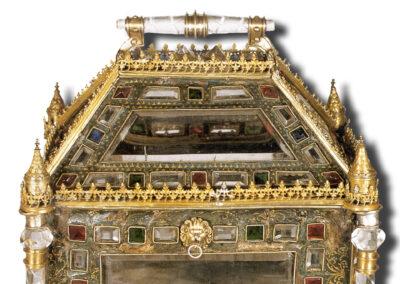This reliquary chest of gilded silver, carved rock crystal and polychrome wood is an Italian work, probably, according to J.M. Cruz Valdovinos (1992, p. 82) a Venetian work that the same author dates, from the formal analysis of the cresting and the rock crystal columns, to the second half of the 15th century. It is probably the "crystal monstrance" that María de Mendoza, widow of Francisco de los Cobos, gave to the pantheon chapel and which is described as follows in 1664: "...".a four-cornered crystal monstrance with four-cornered stones, garnished with a gilded silver chest of gold-plated silver."(A. Moreno Mendoza, 2013, p. 187).
Rectangular in plan, it has an architectural structure with columns of carved rock crystal and metal rings at each of its corners, which apparently support cylindrical metal towers with a scaled roof, which are linked by a simple cresting of plant motifs, columns resting on wooden bases joined by a base of the same material which, in black and gold, simulates a cushioned roof. The lid forms a truncated pyramid. On all four sides, both on the body and on the lid, there are bevelled cut-glass windows framed by set rock-crystals, alternating in shape and colour, which reveal a reliquary that is slightly raised on a small octagonal silver pedestal, Its eight sides, fastened with gilded threads, contain twenty-four remains of bones, some identified by legends in ink on paper, which read: Saint Matthew the Apostle, Saint Egidius, Saint Geronimo, Saint Roque, Saint Clement, among others.


